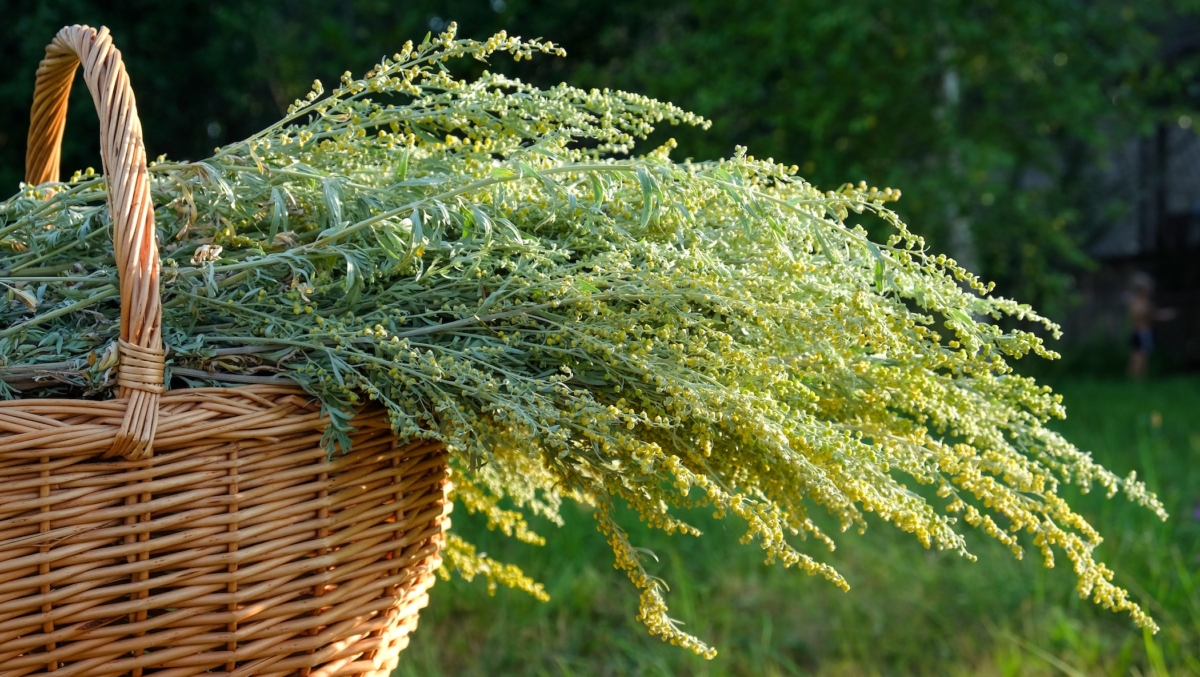


Editors note: Republished June 2023 because malaria has made a reappearance in the United States.
Congratulations go out to Professor Tu Youyou for her 1972 discovery in processing the Chinese herb Artemisia (Qing Hao). Tu is now recognized with a Nobel Prize in Medicine.
Her work at the Academy of Traditional Chinese Medicine in Beijing, China, has saved thousands from malaria deaths in the last 40+ years.
Before Tu studied an ancient Chinese text regarding the cooking of the root Artemisia, the herb was not successful at curing malaria patients. Maybe she read about the prominent physician and alchemist Ge Hong (284–364 CE), who wrote a formulary called “Zhou Hou Bei Zhi Fang” (“Prescriptions Within Arm’s Reach for Use in Emergencies”). Many of the formulas in that book are still in use today. He was the first to mention qing hao, (Artemisia Annua) as a treatment for malaria. Tu’s discovery led to chemical constituents in Artemisia being viable and able to produce a therapeutic effect against deadly malaria. Quercetin has since been identified as the most therapeutic constituent, but there are over 30 chemical constituents in the roots of Artemisia. (See below)
Interestingly, Tu’s work was done over 40 years ago, but the Nobel Peace Prize committee’s recognition of this work must certainly have been influenced by the number of lives this discovery has saved over the past 40 years. In 1972, I’m certain nobody could have predicted the number of casualties malaria would claim.

The first blog I ever wrote on the Pacific Herbs website was about the Chinese herb Qing Hao and its use in curing malaria. Below are some excerpts from that blog and a link to it.
“Malaria is the No. 1 killer in underdeveloped countries, especially prevalent in Africa where it’s an epidemic. As many as 5 million people each year contract malaria; many recover, many do not. Malaria kills nearly 1 million people worldwide each year.
“The Swiss pharmaceuticals company Novartis is using a compound derived from the Chinese herb Artemisia is driving down deaths and infections, said Chris Hentschel of the Medicines for Malaria Venture. The FDA has also recently approved the drug Coartem, an Artemisinin-based combination treatment (ACT) for malaria, which is said to have a 96 percent cure rate. If the price of the drug is affordable, this is excellent news.
“If not, we should all be asking why? Artemisia costs pennies to grow and process. Chinese herbal medicine pharmaceutical companies cook this herb in bulk and the cost is minimal. The cost of a cure should not be prohibitive when people are suffering and dying … from any disease.
“The credibility of Chinese herbal medicine is coming full circle in the scientific age. We can only hope this is just the tip of the iceberg. The efficacy of Chinese herbs has a 2,000+ year history. Reuter’s also reported, ‘The treatment, administered to 57 million people last year, saved half a million lives last year.’ That’s big news! If there was a drug that saved 500,00 people in the U.S., last year alone, we would be hearing about it. Because it’s in underdeveloped nations, it does not make our nightly news.”
Please share this blog with your friends. Chinese herbs work. The Nobel Prize committee certainly sees the efficacy.
Chinese herbs are becoming the drugs of the 21st century. Even pharmaceutical companies now look to Chinese herbs for cures that have existed in Chinese medicine text for centuries.
Republished from PacHerbs.com
Postscript:
Artemisia annua contains: sesquiterpenes, flavonoids, coumarins, essential oil, palmitic acid, stigmasterol, beta-sitosterol, aurantiamide acetate, annuadiepoxide, beta-glucosidase 3, etc. Sesquiterpenes contains arteannuin, artemisinin A (qinghaosu 1), artemisinin B (qinghaosu 2), deoxyartemisinin (qinghaosu 3), qinghaosu 4, qinghaosu 5, qinghaosu 6, arteannuin-C, artemisinic acid (qinghao acid), methyl artemisinate, artemisinol, annulide, friedelin, friedelan-3-beta-ol, etc. Flavonoids include chrysosplenol D, artemetin, casticin, cirsilineol, axillarin, cirsiliol, tamarixetin, rhamnetin, cirsimaritin, rhamnocitrin, chrysoeriol, kaempferol, quercetin, luteolin, patuletin, etc. Coumarins include scopoletin, coumarin, 6-methoxy-7-hydroxycoumarin, scoparone, etc. Wormwood oil includes camphor, beta-caryophyllene, iso-artemisia ketone, beta-pinene, bornyl acetate, carveol, benzyl isovalerate, beta-farnesene, copaene, gamma-muurolene, fenchone, linalool, isoborneol, alpha-terpineol, borneol, camphene, myrcene, limonene, gamma-terpineol, etc.
http://www.nobelprize.org/nobel_prizes/medicine/laureates/2015/tu-facts.html
